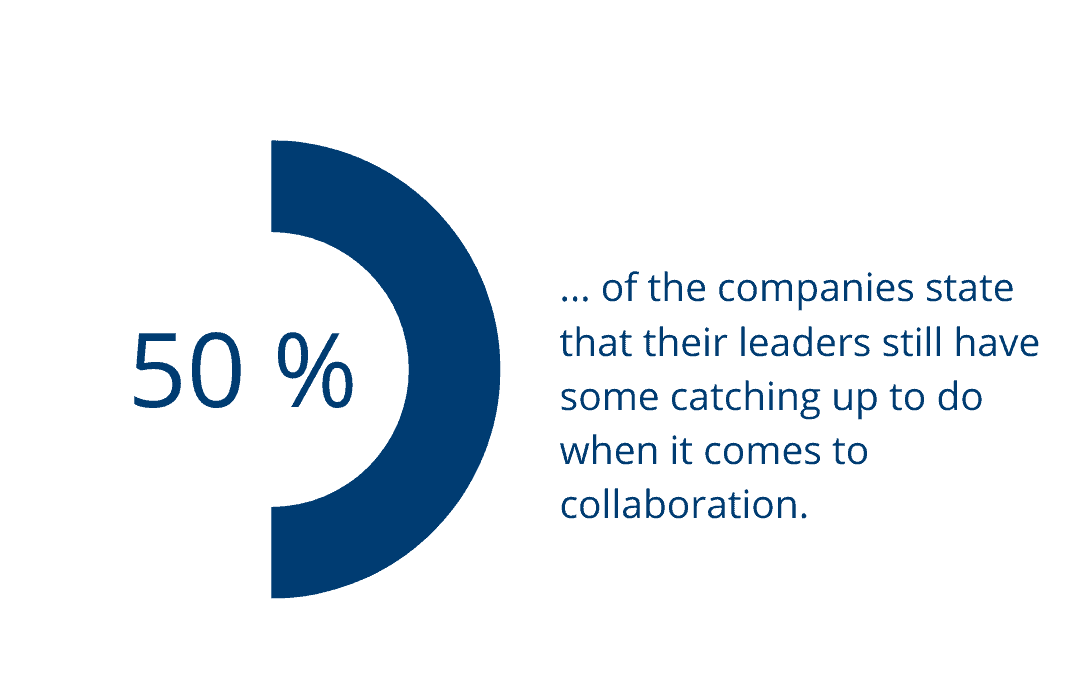
In times of ongoing challenges and increasing uncertainty, it is essential that we position our companies so that they can respond to change and perform effectively. This requires the strength of the entire workforce. Markus Franz, Senior Partner at Staufen AG, explains in an interview the particular importance of leaders in this context.
Mr. Franz, you train and advise executives both locally in the companies and at the Staufen Academy’s executive training courses. What are the expectations a leader faces today?

First of all, every leader must start with themselves individually. Before I can energize, direct and lead others, I must first (want to) know what my own scope of activities is. What is it that I have to do differently today or tomorrow, if anything? Am I ready for the shift in mindset, and how willing and able am I to learn?
Also fundamental is the ability to prioritize and focus. “What am I really being paid for?” is another good question that leaders should be asking themselves every now and then. Otherwise, you quickly risk getting bogged down in complexities and workloads with limited effectiveness. However, effectiveness is the be-all and end-all of a good leader. Recognizing in a given situation what the task, the circumstances and the team need right now, while always keeping an eye on the overarching goal – that is effectiveness.
The Staufen “Collaboration. Success Factor Collaboration” study reveals that in half of the companies surveyed, manager still have some catching up to do. Many senior executives are lacking in teamwork and motivation skills. Miscommunication and conflicts between employees and superiors are the consequence. Instead of analyzing problems with the people involved, they are more often than not brushed aside or deliberately left unresolved. What steps can leaders take to improve interaction among their staff?


Collaboration and working together should be top of the agenda for any executive. The will and ability to work in teams and networks have already proven to be a success factor for many people and organizations. Leaders play a key role in this. They must create the framework for collaborative interaction. Self-interest, a distinctive silo mentality, power games or unclear responsibilities and competencies are real challenges that need to be solved. Not only the employees suffer from these problems, but the customers as well (unsuspecting), because the waste associated with these problems is costly in terms of both time and money.
Here too, it starts with your own mindset. Do I tend to be the ‘lonesome cowboy type’ or do I have an open mind and willingness to collaborate? The next step is to create a climate of openness, appreciation and trust.
Last but not least: Resistance is an integral part of change. You should take them seriously and not try to sit them out or “convince” your employees. Smoldering resistance and conflicts must be addressed, because if they are ignored, they will not only jeopardize your objectives, but also a positive and constructive working relationship.
What requirements must be met for this to happen?
It requires, for instance, that the executive improves her communication and conflict management skills. They should first say what they are doing – and follow through with what they have said. Taken as a whole, what this means for many people in managerial positions is that they have to adjust their own behavior where necessary. Often this is not easy and can only ever be done one step at a time. After all, it is the success patterns of the past that may be more of a barrier today. A mentor, a coach or another manager can provide support.
A cooperative management style is one thing, mistakes are another. The Staufen study also shows that people in leadership positions still find it tough to deal with both their own mistakes and those of their employees. What should be changed here?

An increasing number of decisions need to be made under conditions of great complexity and uncertainty; causality and predictability tend to diminish. Courage and curiosity are imperative skills where transformation and change are concerned. That also means that experiments may fail, decisions may go awry, and mistakes will be made. Even in the best possible processes, implemented by empowered, competent people. This applies to both employees and executives alike. What is important is how we deal with it.
If you have made the wrong decision, you have to communicate it openly and transparently. No one person is infallible, and only in this way can we learn from our mistakes. How to deal with mistakes is a fundamental problem in many organizations. We simply have to shift away from a (negative or non-existent) error culture to a learning culture instead. This is the only way to create an environment psychologically of feeling safe, which will lead to the realization that mistakes are an opportunity from which everyone can learn. It’s all right to give certain things a try, even if the desired outcome is not immediate. Change can’t be managed any other way.
A leader should first say what they are doing – and follow through with what they have said.
Markus Franz, Senior Partner, Staufen.ag
Executive Leader Program
With the Executive Leader Program, the Staufen Academy offers leaders the opportunity to broaden their skills so they can successfully manage both personal change and corporate transformation.
MORE ABOUT LEADERSHIP

SEW-EURODRIVE – Lean and smart into the future
Johann Soder has been with SEW-EURODRIVE for more than five decades. He serves as COO for the drive technology manufacturer, which operates manufacturing plants in many different parts of the world. During this time, he has witnessed many changes, driven them himself and turned them into improvements. He speaks with Martin Haas, Founder and Supervisory Board Member of Staufen AG, about how much a company must learn in order to remain competitive.
Read more
Transformation in Turbulent Times: From Boss to Mentor
Companies today are confronted with enormous challenges. The tempo of change is forcing them to adapt their processes so that they will be able to keep up with the international competition in the future. At the same time, unforeseeable events such as the Corona pandemic and the disruption of the supply chain that it triggered…
Read more
